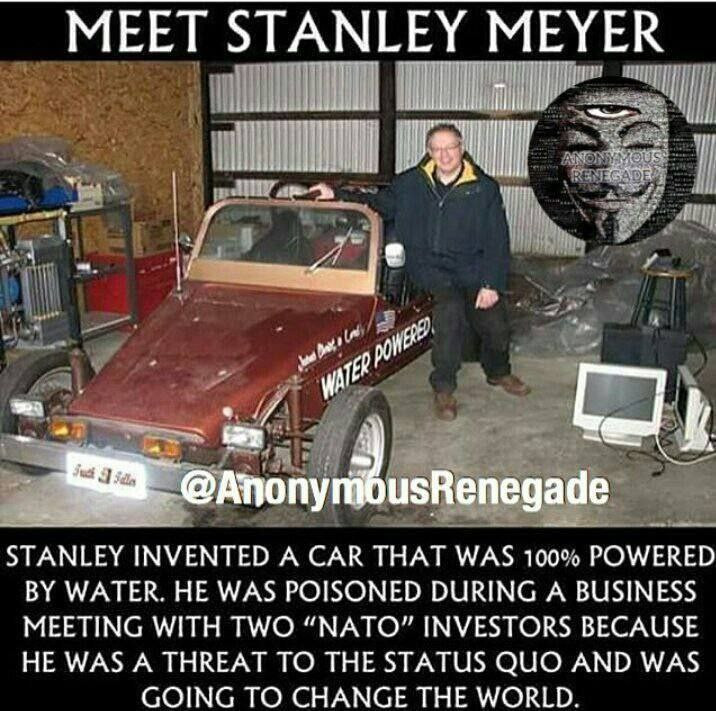The basic principle is this: Molecules have a positive and negative negative magnetic side. Normal electrolysis can use the magnetic principles of water to rip it apart, but it uses a ton of energy.
If the exact resonant frequency of the water is used, along with special circuitry that multiplies the voltage, while reducing the amperage to as little as possible, the resonant frequency will cause the water molecule to temporary "elongate".
A normal oxygen molecule has 6 electrons, but can hold up to 8 in it's stable state. That makes it accept the 2 electrons of the hydrogen atoms. When the water molecule elongates, it allows the hydrogen atoms to be separated from the oxygen atom very easily. In turn, this produces "hydroxy gas", called "Brown's Gas" or "HHO", which are basically forms of hydrogen and oxygen.
If the exact resonant frequency of the water is used, along with special circuitry that multiplies the voltage, while reducing the amperage to as little as possible, the resonant frequency will cause the water molecule to temporary "elongate".
A normal oxygen molecule has 6 electrons, but can hold up to 8 in it's stable state. That makes it accept the 2 electrons of the hydrogen atoms. When the water molecule elongates, it allows the hydrogen atoms to be separated from the oxygen atom very easily. In turn, this produces "hydroxy gas", called "Brown's Gas" or "HHO", which are basically forms of hydrogen and oxygen.
11:59 PM - Dec 05, 2022
Only people mentioned by VALTHOR in this post can reply

